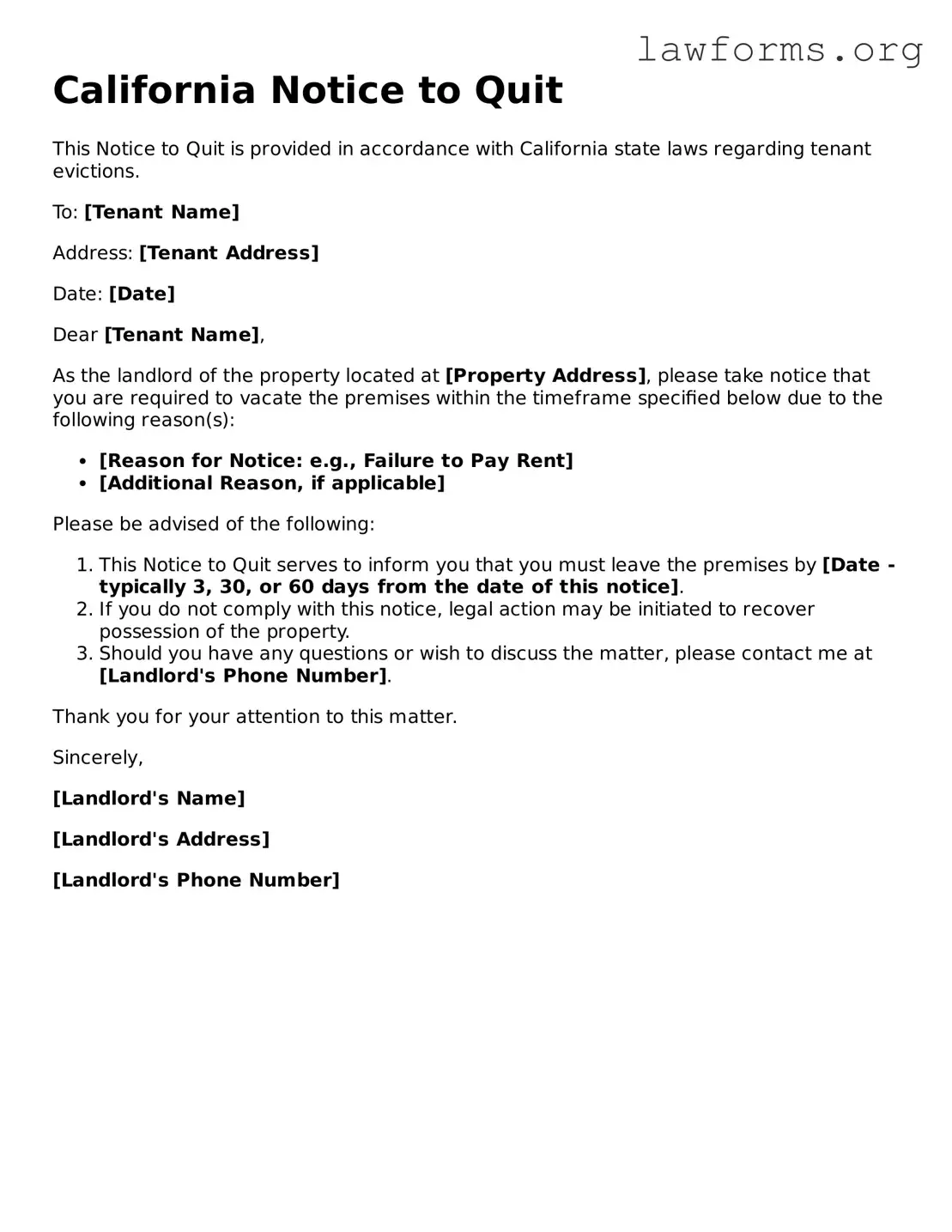Attorney-Approved Notice to Quit Template for the State of California
The California Notice to Quit form is a legal document used by landlords to formally notify tenants that they must vacate the rental property. This notice typically outlines the reasons for the eviction and provides a specified time frame for the tenant to leave. Understanding this form is crucial for both landlords and tenants to ensure compliance with state laws and protect their rights.
To fill out the form, please click the button below.
Customize Document Online
